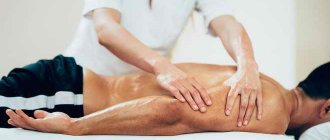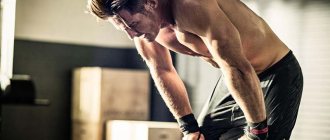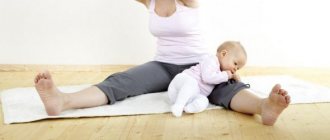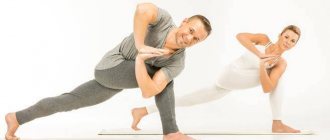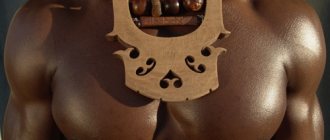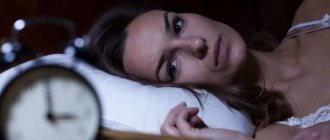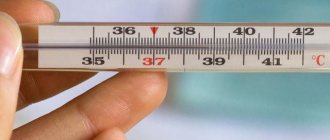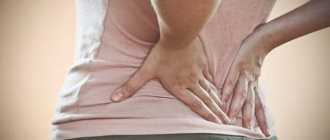Share
Tweet
Pin
+1
Share
0 shared
It doesn’t matter what the training is aimed at - for great athletic results or for amateur fitness support. Loads have a negative effect on muscles and ligaments, and the body needs outside help. Massage before and after training helps you recover faster and helps you achieve your sports goals faster. Let's consider the benefits and harms of massage and the nuances of rehabilitation procedures.
Basic information
Massage is a mechanical procedure affecting the main nerve centers. In addition, it perfectly warms up the muscles, helps to stretch, tone, or disperse blood in locally clogged areas.
Many people consider the procedure of visiting a massage inappropriate and unnecessary. However, it helps to significantly speed up the recovery process between workouts. First of all, the possibility of accelerating the blood and reducing the formation of lactic acid in the muscles plays a role.
Of course, the massage procedure in no way affects either anabolism or catabolism, but it is an excellent adaptogenic procedure, as it improves well-being and reduces the stress factor, which can affect the results of the training process.
Well, and most importantly, post-workout massage reduces the likelihood of injuries, as it simultaneously:
- Warm up all muscle groups;
- An alternative to classic stretching;
- An excellent relaxer.
How to learn to give a relaxing massage
Let's consider the technique from Mikhail Klebanovich, methodologist of physical rehabilitation, adaptation and body-oriented therapy, massage therapist, teacher of massage technologies, winner of the 1st Belarusian SPA Massage Championship.
Relaxation massage helps the client take a break from the hustle and bustle of everyday life. During a relaxing massage, special soft techniques are used.
A relaxing massage is ideal and necessary for overwork, chronic fatigue, lack of sleep and insomnia, long-term mental and physical stress, and nervous tension.
Differences from the classic
In order to understand how sports massage differs from classical massage, you need to understand what the main objectives are for certain types of massage.
| Type of massage | The main task |
| Relaxing | The main task is to relieve tension from muscle tissue and give complete relaxation to the body. Allows you to get a charge of vigor and good mood for the whole day. |
| Manual | This is a complex subtype of therapeutic massage, the main task of which is to treat problems with the spine. Allows you to combat physical inactivity and minor curvatures. In rare cases, it replaces surgery. |
| Classical | Toning all major muscle groups. A targeted effect on the nerve centers, which stimulates blood circulation. |
| Medicinal | Depending on the disease, therapeutic massage specifically affects the source of inflammation in order to level out health problems. |
| Sports | Relieves tension in major muscle groups. Accelerates recovery, increases blood flow in damaged areas, reduces the likelihood of further injury, works on ligaments and main nerve centers. |
| Segmental-reflex | Necessary in cases of rehabilitation after serious injuries. For example, when, as a result of lack of mobility, the muscles have lost sensitivity and tone. |
| Hygienic | A pleasant procedure is akin to a relaxing one, and has an additional hygienic character. |
| Prophylactic | Toning all major muscle groups. Point effect on nerve centers. Depending on the tasks, it can be carried out as sports, therapeutic or manual. |
As you can see, sports massage is a complex procedure that combines the principles of both classical and hygienic massage. Its main task is to accelerate recovery after training and overall improvement in well-being.
Possible harm - which muscles should not be massaged and why
Since it is undesirable to delay a massage session after training, it is better to refrain from kneading muscles that did not work or worked little in the gym. However, potential harm should rather be considered in the context of other factors. There are no contraindications regarding the effect on individual muscles.
You should not perform the following procedures:
- if there are bruises, abrasions, open cuts;
- in the presence of fungal and viral infections (fanatical athletes may well exercise even if they are not feeling well, but there is no need to aggravate the situation with a massage);
- for bursitis, gout, rheumatoid arthritis.
If there are even slight doubts about the advisability of massage procedures, it is better to refrain from performing them.
It is extremely important to do the massage correctly. The specialist will do without consulting the athlete, but if the athlete is being massaged by a friend who is only familiar with the basics of the technique, he needs to be supervised. The table will tell you in which directions the movements are performed, “processing” certain zones.
| Zone | Direction |
| Back | From the waist to the neck |
| Legs | From feet to groin area |
| Hands | From hands to armpits |
| Neck | From head to shoulders and back (in the opposite direction) |
Possible harm
Is there any possible harm from post-workout massage? In fact, there can be no harm from a properly done massage. However, if the procedure is not carried out by a specialist in his field, then under the influence of his massage you can seriously stretch the muscle, which will lead to injury in the next workout. In addition, improper massage does not provide any benefit, so in this case, the likelihood of getting a sprain, or discomfort that will increase stress after training can negatively affect all progress. Otherwise, if you do not have serious injuries in the form of sprains or recent dislocations, massage cannot cause significant harm to the athlete’s body.
When to do it right
Sports massage of the back and neck - the price is negotiated individually depending on the duration of the session and the qualifications of the master - differs from the classic one in that it has a more powerful effect on muscle groups that received intense loads during training. You can do it after each session, this will help quickly remove lactic acid from muscle tissue and restore them before the next workout. Thus, sports massage is performed before training approximately three times a week - provided that you visit the gym every other day and give moderate stress to your body.
On a note:
Daily massage sessions of this type, like training, are not practiced - this does not make sense and will not bring benefits; the muscles must rest periodically from any external influence.
Before or after is a common question from beginning athletes. Professional athletes always pre-warm up their muscles before competitions. The same applies to training. But in this case, the lightest and shortest massage is sufficient. But after training, massage is highly recommended. perform it after a short rest and a relaxing shower.
Preparing for a massage
There are several basic rules that will allow the massage procedure to be more effective and reduce discomfort.
- After training, at least 10-15 minutes should pass, during which time the main pumping effect will end, which can lead to additional unpleasant sensations.
- You can't close the carbohydrate window. In general, you can only consume a small amount of BCAA before a post-workout massage. Since the stomach should be empty and relaxed during the massage procedure.
- Massage is performed only on a clean body, so make sure to take a contrast shower immediately after training.
- If you are injured during training, indicate this to the specialist so that he does not work on the damaged area.
Otherwise, the massage does not have any specific preparatory procedures.
Advantages of the Atlanta fitness club
Our clients prefer us for the following reasons:
- comfortable conditions for classes;
- Friendly atmosphere;
- high level of employee training;
- excellent service;
- availability of all necessary services in one complex.
An attentive approach to each client and a warm atmosphere set us apart from a large number of similar centers and attract new visitors. See you in fitness!
Training for an athlete is a serious stress. In the process, muscle tissue becomes clogged with lactic acid and is subjected to compression and tearing stress. All this is a huge stress for the whole body, from which it takes quite a long time to recover. But there is a way out that allows you to speed up recovery between workouts. These are various recreational treatments that include post-workout massage.
How often should the procedure be performed?
How often can you get a massage after training? It really all depends on how often you exercise. If your workouts are daily, then you can refrain from daily massage, or replace a sports massage with a relaxing one.
In the case when the training is a classic three-day split, then the massage procedure can be carried out even after each training session. However, the effectiveness of such a massage will be small.
In any case, massage is only part of the recovery complex, therefore, you can alternate between massage and sauna, or perform only a partial massage. After training the legs, it is recommended to massage immediately, i.e. after the approach - this will reduce the influence of lactic acid the next day, which is especially important, since the legs are a muscle group that allows movement.
How did relaxation massage come about?
The history of therapeutic massage goes back more than 5,000 years and contains a large number of options and purposes. In Chinese, Persian and Egyptian cultures, therapeutic massage was used for a variety of purposes, including improving blood circulation and restoring joint tissue.
There are a huge variety of massages, but perhaps one of the most famous and popular is the relaxing Swedish massage. It was developed in the 19th century by the Swedish psychologist Per Henrik Ling for use in physical therapy. He created his massage system based on the methods used by the ancient Greeks and Romans to improve physical condition.
It is believed that the true creator of the Swedish massage technique is the Dutch practitioner Johan Georg Metzger. He gave the techniques of this type of massage French names.
It is generally believed that massage is a luxury that only rich people can afford. However, over time, the opinion has changed. Nowadays, Swedish massage is used not only as a relaxing remedy, but also to improve overall health.
To summarize
Finally, I would like to answer one of the most frequently asked questions - it is better to do a massage before or after training. Of course, there is an effect from a massage before training. And it is comparable to a good warm-up or stretching. In addition, massage before training is needed in cases where the athlete has professional injuries.
But still, the effectiveness of massage after training is much higher. The way it allows:
- Remove lactic acid from the body;
- Remove tension from muscles;
- Reduce the likelihood of getting pinched;
- Relieve psychological stress;
- Speed up recovery.
If you do not have the opportunity to receive a full massage after training, it is enough to take a shower with a massage nozzle. Recently, good gyms have special showers that massage all muscle groups.
The effect of massage after training
Benefits of post-workout massage:
- muscle relaxation and reduction of pain symptoms;
- restorative effect after intense training - fatigue goes away faster;
- saturation of muscle tissue with oxygen;
- removal of metabolic products from tissues;
- improvement of neuromuscular connection - athletes who do not neglect massage feel the target muscles better;
- acceleration of blood circulation - actively circulating blood transports a sufficient amount of amino acids and other substances useful to the athlete to the muscles, which has a beneficial effect on muscle growth;
- therapeutic function – the body copes with sprains and microtraumas more effectively after a massage. Among other things, manipulations help avoid the formation of adhesions. As in bones after fractures, adhesions can form in muscles after microtraumas, reducing the elasticity of ligaments and muscles. Regular physiotherapy sessions are an effective remedy against this;
- unloading of the central nervous system - a high-quality massage allows you to relax and enjoy, hard muscles become soft and pliable - both soreness and nervous fatigue disappear.
Post-workout massage increases muscle strength and tone, relieves pain, and promotes lymph and blood circulation. The effect appears both after aerobic and anaerobic exercise. In Western countries with a large number of amateur runners, self-massage sessions are quite popular. Probably everyone is familiar with the “wooden legs effect” after a run. Massaging movements quickly relieve tension and reduce unpleasant symptoms after the following “approaches”.
Research by scientists from Canada
It is believed that post-workout massage helps remove lactic acid from muscle tissue. Allegedly, after strength training your legs (for example), you need to massage your lower limbs, and the decay products will go away faster. There have been no serious studies on this topic. Mechanical effects on tissues do relieve pain, but quite possibly for other reasons.
A few years ago, Canadian scientists experimented with male athletes. After grueling training, the subject had one leg massaged. Immediately after the procedure and a couple of hours after it, muscle tissue was taken for analysis. The surprise was that in both legs the amount of lactic acid remained the same - massage did not affect its concentration. The results of this experiment were presented in Science Translational Medicine.
At the same time, pain in athletes disappeared. It turned out that as a result of massaging sessions, the number of mitochondria increased and the intensity of the inflammatory process decreased. Hence the analgesic effect. Mitochondria play the role of cellular energy generators. Moreover, 10-minute procedures were enough for their growth. Why inflammation resulting from microtraumas is reduced is not yet completely clear. But for athletes, the fact that massage works is much more important.
Experiments on marathon runners
Canadians are not alone in their research. Other experts compared the effects of massage and variable pneumocompression, a physical therapy procedure used, in particular, to treat ischemia and venous thrombosis. This time the subjects were marathon runners who had run the distance the day before.
The runners were divided into two groups. Participants in the first group were massaged, and those in the second group were sent to a PPC session. The intensity of pain in the muscles was measured before and immediately after the “jog”, after the procedures and a week later.
It turned out that the runners with whom the massage therapist worked:
- the pain disappeared much faster than in the participants in the PPC group;
- endurance was restored much faster (1/4 compared to the other group);
- Muscle strength was restored much more quickly.
Other studies have shown that the maximum effect of massage is experienced by amateurs. Although professionals often resort to the services of specialists, athletes from a large category of amateurs benefit more from physical therapy sessions.
You will get rid of pain and become more cheerful
When blood begins to circulate faster throughout the body, inflammation decreases and pain subsides. Depending on what is causing the pain, massage may be the ideal way to relieve it. It will help you relax well, increase flexibility, and feel better. The reason is that massage produces serotonin, which sends signals to the brain, resulting in an improved mood.
Intense training takes a toll on the body. If you constantly increase the load in your classes, you will experience muscle pain again and again. Take time for a massage to relieve pain and reduce inflammation.
What to do after a visit to a massage therapist
After the relaxation procedure, wait about a day before starting strength or cardio training again. Exercises performed too soon after a massage session can interfere with recovery, increase pain and reduce the effectiveness of muscle tissue. Light exercise such as walking or swimming is great.
Drink more clean water and take a bath with sea salt. Give yourself time to fully recover before going to the gym again.
Is it possible to remove belly fat with massage?
The accumulated fat in the abdominal area has a loose structure. The massage therapist breaks down this fat using massage movements. In addition, massage helps improve blood circulation in the abdominal area, prevents blood stagnation in the internal organs, and normalizes the functioning of the intestinal tract.
Abdominal massage must be done constantly, otherwise there will be no result, a few minutes a day and the result will be noticeable. But you need to do a massage an hour before meals or 1.5-2 hours after.
Abdominal massage is not recommended in the following cases:
- Period;
- Pregnancy;
- Stomach ache.
To achieve results, abdominal massage must be combined with proper nutrition and exercise.
Is it possible to massage a hernia?
In case of exacerbation of the disease and severe pain, any massage is contraindicated. If there is no exacerbation or pain, then massage can be done. It will help relax muscles, improve blood circulation, tone the body, and improve the patient’s condition. But he won't rule out pain later.
Types of massage for hernia:
- Classic – rubbing, kneading, vibration, pinching, etc.;
- Vacuum (can) – creating negative pressure;
- Hydromassage – vibration massage with water;
- Point – pressure on painful points;
- Self-massage - with the help of massagers and with your own hands, kneading, rubbing, vibration.
Myths about massage
Massage stretches facial skin
This myth has no basis, but nevertheless is quite tenacious. Firstly, facial massage is performed along massage lines - the lines of least stretch of the skin. And secondly, our skin is very elastic, and it’s impossible to just stretch it.
Our skin stretches only in one case - when the volume of tissue underneath it increases. For example, if you gain weight, during pregnancy or in case of severe swelling. But as soon as the volume decreases, the skin tends to shrink back under the changed volume.
Of course, over the years, the elasticity of the skin decreases, but even in old age, the skin sags not so much because it has lost elasticity, but because the volume of tissue underneath it has changed significantly - the volume of the skull bones, muscles and subcutaneous fat.
I don’t see any effect from the massage
Sometimes you can hear such reviews. In fact, after a good massage, the effect is felt after the first session. Anyone who has had the pleasure of enjoying a good massage will certainly confirm this. If there is no effect from the massage, it means either the specialist is weak in the massage technique, or the technique itself is weak and ineffective.
Massage is a procedure where the result very much depends on the qualifications of the specialist, in contrast, for example, to some hardware techniques, where it is relatively easy to master the correct technique for performing the procedure. For example, some girls now do the same ultrasound peeling (ultrasonic cleaning) at home on their own using a portable ultrasound scrubber and instructions for use.
Facial massage is a useless procedure
This opinion can sometimes be heard from some cosmetologists. I think, for the most part, this is said by those cosmetologists who either have poor knowledge of massage techniques, or are in poor physical shape and simply are not able to regularly perform such procedures, because massage is hard physical labor.
Massage gives only relaxation and nothing more
Even if massage only provided relaxation, for this alone it would become an indispensable procedure these days, when most people suffer from physical and mental stress.
There are even special techniques, for example, neurosedative massage of the face and body, where the effect is aimed primarily at the nervous system. The purpose of this massage is to eliminate the effects of prolonged stress, because stress has a negative effect on the entire body.
However, as I already said, the effect of massage is not limited to relaxation alone.
Massage is a panacea for all problems
This opinion can sometimes be heard from some massage therapists. In fact, massage is an element of a healthy lifestyle for your face and body, such as physical exercise.
In other words, this is an important component of care, but not a panacea. There is no panacea at all; to slow down aging and maintain health, an integrated approach is required.
How to restore muscles after training?
Let's show it using a ball massage as an example. Take a fairly hard ball. We lie on it with our thigh and begin to roll the ball with our thigh.
We roll the ball along the fascia, which you can’t reach in any other way.
The same goes for the gluteal muscle. We place the ball under the buttock and roll on the ball, trying to reach the deepest muscles with the ball.
Then comes the lower back and spine.
Withers - we stand in a half-bridge and work on the withers and touch the delta a little.
Then we put the ball under the arm and lie on the ball a little.
And finally - the neck. We place the ball under the neck and make simple turns to the right and left. We are doing great work on the neck and part of the head.
